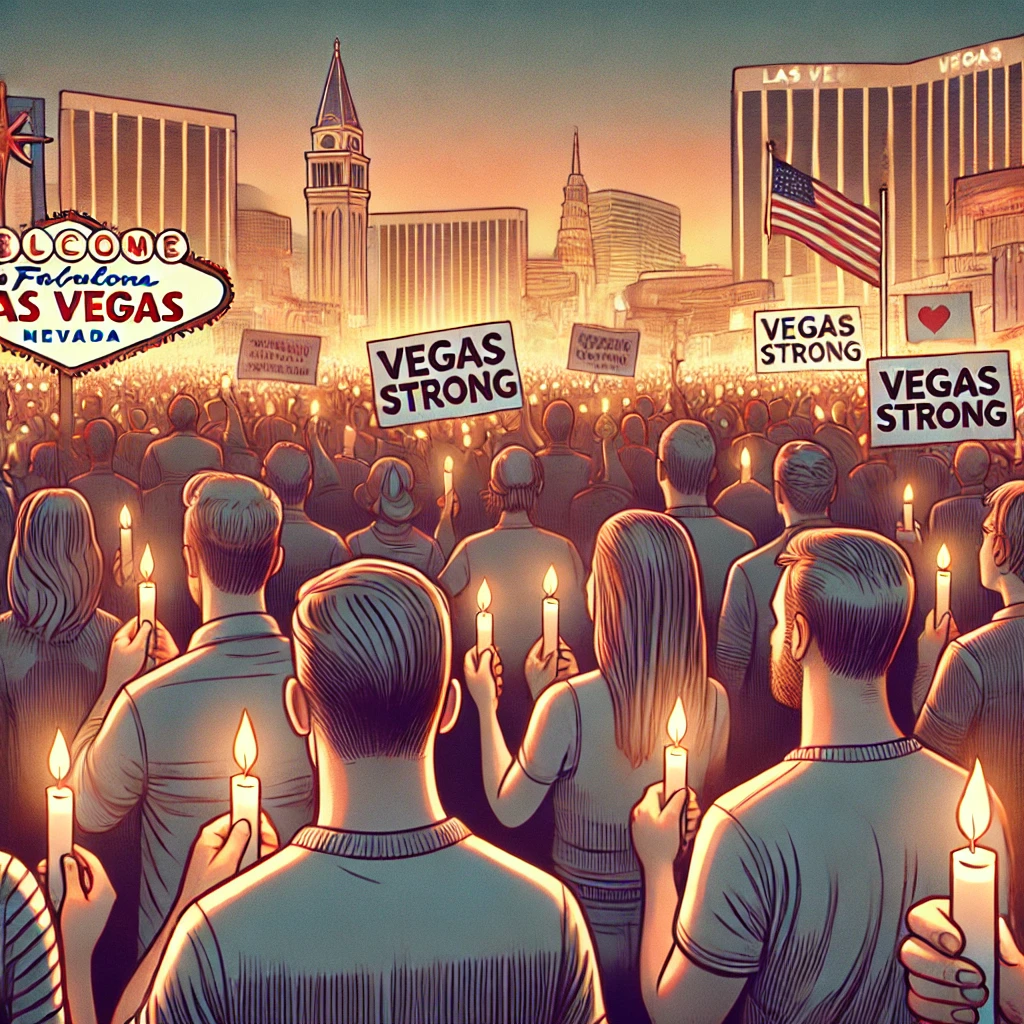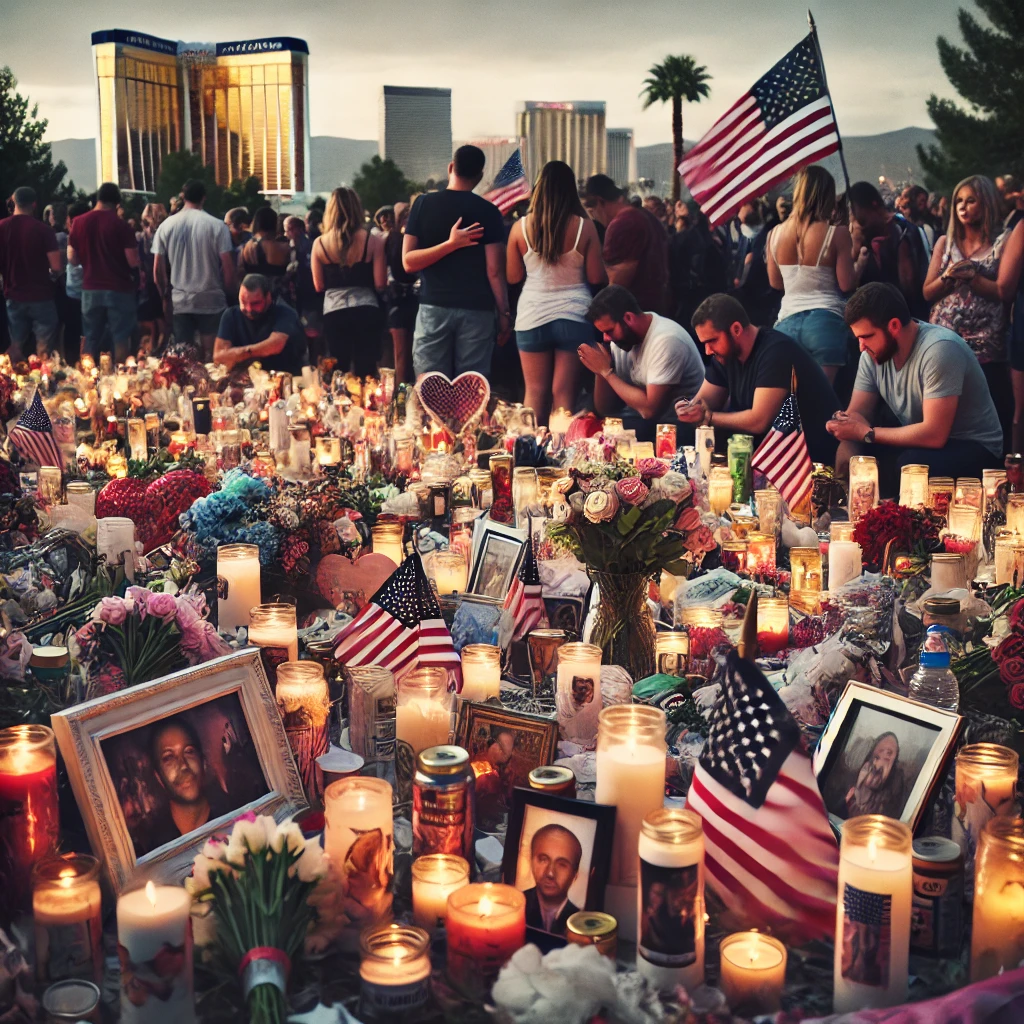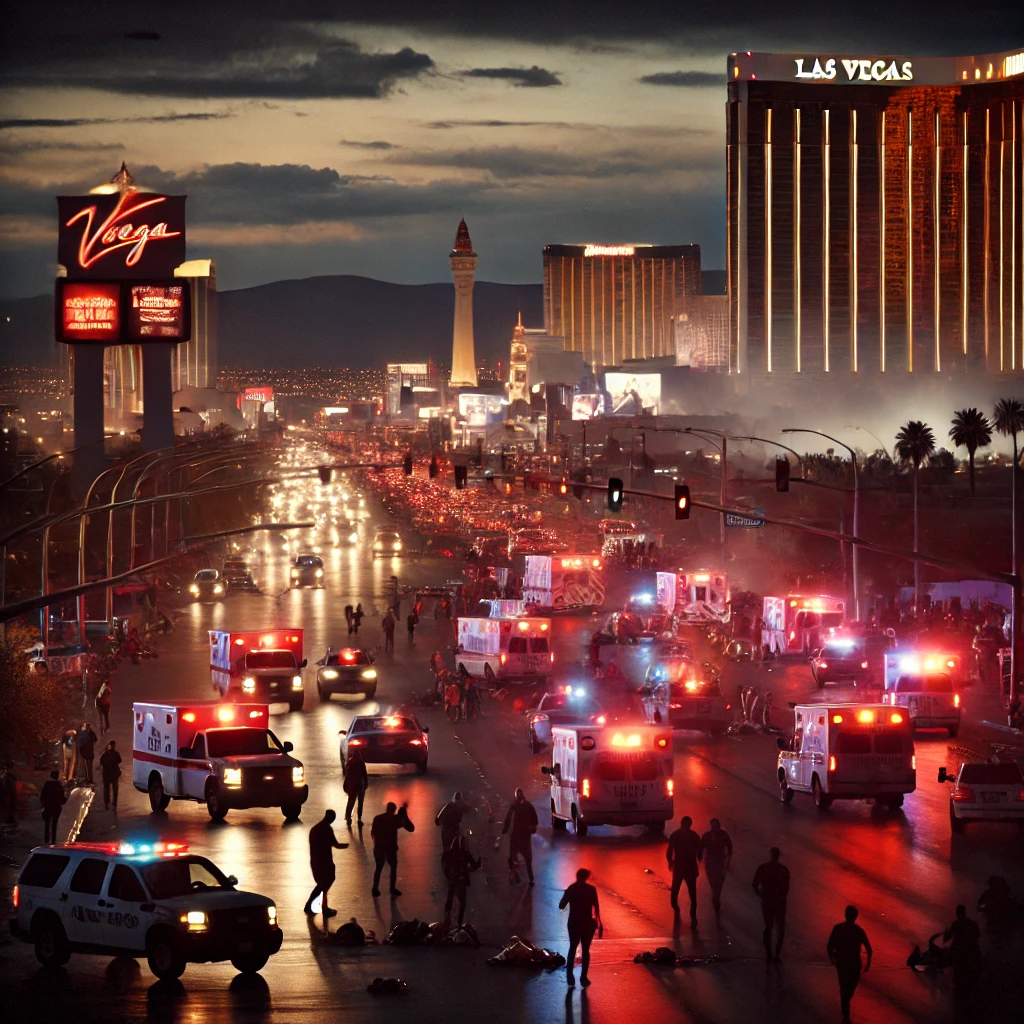On the night of October 1, 2017, the deadliest mass shooting in modern U.S. history unfolded in Las Vegas, Nevada. From his 32nd-floor hotel room at the Mandalay Bay Resort, 64-year-old Stephen Paddock opened fire on a crowd of concertgoers attending the Route 91 Harvest music festival. In a span of 10 minutes, Paddock’s attack killed 58 people and wounded over 850 others. The horrifying event left the nation in shock and surpasses the 2016 Orlando nightclub shooting as the most devastating mass shooting in U.S. history.

A Night of Terror
The Route 91 Harvest festival was a three-day country music event held on the Las Vegas Strip, and on that fateful night, thousands of fans had gathered to watch Jason Aldean perform. Without warning, rapid gunfire erupted, and chaos ensued as concertgoers scrambled for safety. Paddock, armed with rifles modified to fire like automatic weapons, unleashed a relentless barrage of bullets on the unsuspecting crowd. Concert attendees, initially unsure of what was happening, quickly realized they were under attack, with many diving for cover while others tried to help the injured.
Law enforcement raced to locate the source of the gunfire. The sheer scale of the attack, combined with the elevated vantage point Paddock used from his hotel room, made it difficult for officers to immediately stop him. Paddock fired down into the crowd for several minutes before taking his own life as police closed in on his location.

Unanswered Questions and Investigation
In the days and weeks following the shooting, investigators and the public sought answers to what motivated Stephen Paddock’s rampage. The extensive investigation revealed that Paddock had meticulously planned the attack, amassing a large arsenal of weapons and ammunition. However, despite thorough scrutiny of his background, authorities were unable to determine a clear motive. Unlike many mass shooters, Paddock had no known affiliations with extremist groups, no significant mental health history, and no previous criminal record. The absence of an explanation for the massacre deepened the nation’s sense of bewilderment and grief.
The tragedy also sparked renewed debate over gun control and firearm regulations. The use of bump stocks, which Paddock used to increase the rate of fire of his weapons, became a focal point of discussion, eventually leading to a federal ban on the devices in 2018. For many Americans, the Las Vegas shooting became a painful symbol of the ongoing struggle to address mass violence in the country.
A Community Forever Changed
The impact of the Las Vegas shooting rippled far beyond the immediate victims and their families. The city of Las Vegas itself became the epicenter of national mourning, with vigils and memorials held in honor of those who lost their lives. The names of the 58 victims were etched into the hearts of their loved ones and the broader public. Survivors of the attack faced long and difficult recoveries, both physically and emotionally, as they grappled with the trauma of that night.

The aftermath of the shooting also highlighted the incredible acts of heroism and solidarity that emerged from the tragedy. First responders, medical personnel, and ordinary citizens rushed to the aid of the injured, risking their own safety to save lives. In the years since, the Las Vegas community has worked to heal, but the scars of that night remain, a reminder of the fragility of life and the devastating toll of gun violence.
The Las Vegas shooting stands as a dark chapter in modern American history, and its effects continue to be felt. The sheer scale of the attack, combined with the absence of a clear motive, leaves many questions unanswered. But the courage and resilience shown by survivors and responders serve as a testament to the strength of the human spirit in the face of unimaginable horror.
